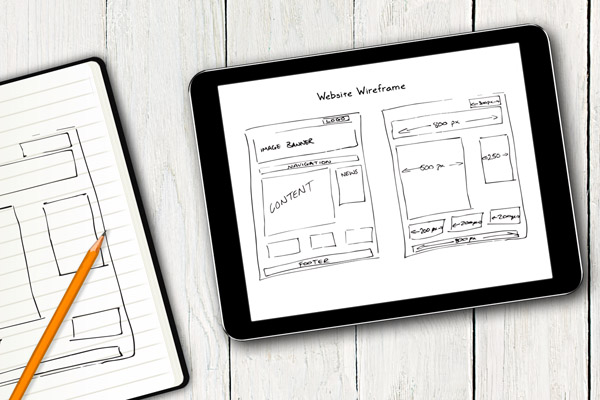We’re pleased to offer a free website consultation. Call today, (303) 357-5757, or e-mail dbc@dbcdigital.com.
The Biggest Web Design Trends for 2018
As our use of the web keeps evolving, so do the trends for web design. With technology creating new and exciting options and the overwhelming use of mobile devices to feed our insatiable need for knowledge and entertainment, these are the major website design trends for 2018.
1. Clean and Simple Home Pages
Websites are moving away from busy web pages and making their home page clean, simple and sometimes even stark. These website owners understand that their visitors know to scroll down the page for more info, so the starting page now can convey just one simple message.
Check out Spotify, who uses bright colors, one central idea, and a simple design to get their messaging across.
2. Bright Colors and Distinct Typography
Spotify isn’t the only website not scared to go bold. A lot of sites are heading towards bolder colors and creating their own typography, so their website helps you immediately recognize their brand. For instance, most people now recognize the lowercase “f” that’s part of the Facebook logo. That kind of brand recognition has become an important goal to companies on a very-crowded internet.
The bicycle company Cyclemon uses a similar approach with their home page. They use a bright yellow background with light-pink lettering and a distinct font. They’re fighting to get your attention by being bright, colorful and different. The biggest web design trends in 2018 will follow this pattern of being noticeable and unique.
3. Video that Plays in the Background (“Cinemagraphs”)
While some argue that it’s a distraction, a 2017 web design trend that’s gaining momentum in 2018 is video movement when you open the homepage. Sites like K23 Media use looping video that plays behind their menu, creating a sense of movement to their website.
4. Progressive Web Apps
The love of mobile apps is spilling over to web design. Web designers are taking the best of web and the best of app designs and blending them to create a new hybrid called “progressive web apps.” These progressive web apps are built to work in all environments, easily switching between mobile to desktop.
Web design trends in 2018 will feature more upgraded websites with animated page transitions, “push” notifications and splash screens.
Sites like Flipboard are built using the progressive web app mentality, making it quick and easy to use.
5. A Focus on Mobile-Responsive
Progressive web apps have become popular because having a site that’s mobile friendly is incredibly important. According to Google, over 50% of web searches are now done on a mobile phone.
With Google rolling out its new mobile-first index in 2018, being mobile friendly is an absolute must for website owners if they want to show up in search results.
What’s a mobile-first index? That means Google will rank and present search listings based on the mobile version of your content, even when someone is searching from their desktop. Every site must now be mobile friendly (“responsive”) if you want to rank better than dead-last in Google.
6. Screen-Bottom Navigation
With our love of mobile searching, the way we search has totally changed. Since certain parts of our phone screen are easier to reach with one hand, we’re getting used to clicking at the bottom of the screen while we navigate. Many apps follow this rule and use the bottom navigation (a.k.a. tab bar) for the most important features.
Facebook makes main pieces of their core functionality available with one tap at the bottom, allowing rapid switching between features.
With mobile app design taking over, web designers are placing “sticky” menu items (they stay in the same place even when you scroll) at the bottom of the site instead of the top.
7. 3D and Virtual Reality
As virtual reality becomes more common, virtual reality for websites is becoming a bigger trend. For example, 3D technology works especially well for the real estate market, where people can take a 3D tour of a home without stepping foot out of their house or the agent’s office.
New technology from companies like Matterport has allowed real estate agents to show some of their listings in 3D. Now prospective buyers can do an interactive initial tour of a house just by clicking on a website. Expect to see more amazing things done with 3D and virtual reality in 2018.
Bottom Line for 2018 Website Design Trends
2018 website design trends will be all about making it easier to stand out, to be noticed, incorporating more video and making it easier to navigate the web. Simple design, bold colors, greater mobility and incorporating what works on mobile devices into all web design will be what’s happening in web design in 2018.
If it’s time to update your website, give us a call at (303) 357-5757 or send us a note at dbc@dbcdigital.com. We’ll take a look and give you some ideas and options.
Please note: At DBC Digital, we offer marketing for small and medium-sized business. Our primary services include digital marketing, printing, graphic design, web development, and social media marketing. We’re in Centennial, near I-25 and Dry Creek. We serve clients throughout the Denver metro area, Colorado, and the U.S.











